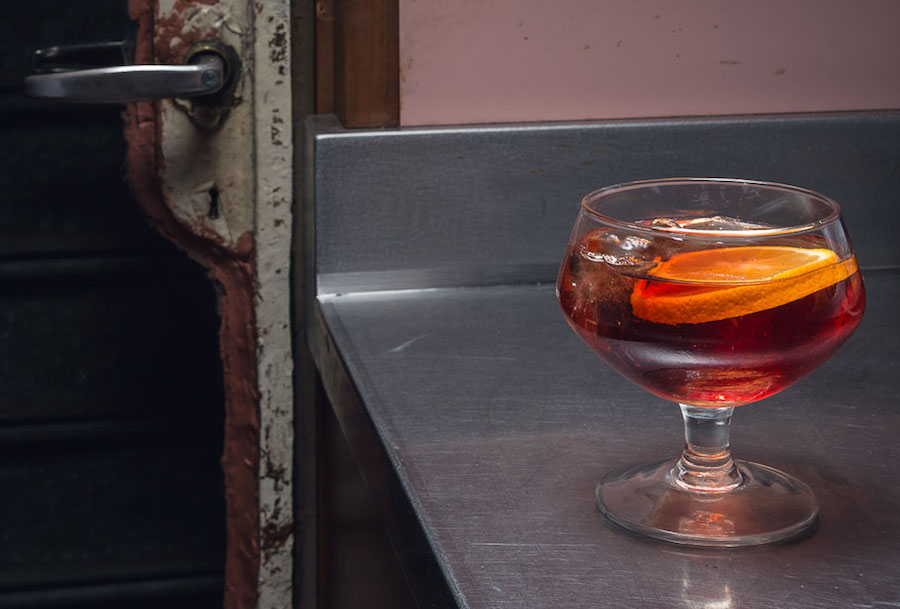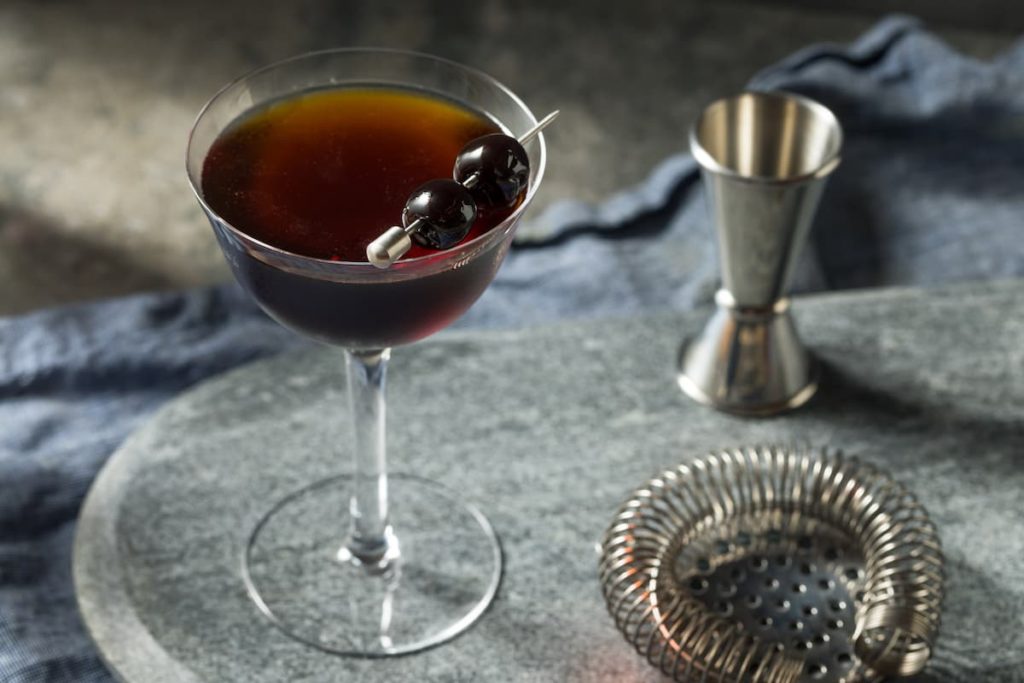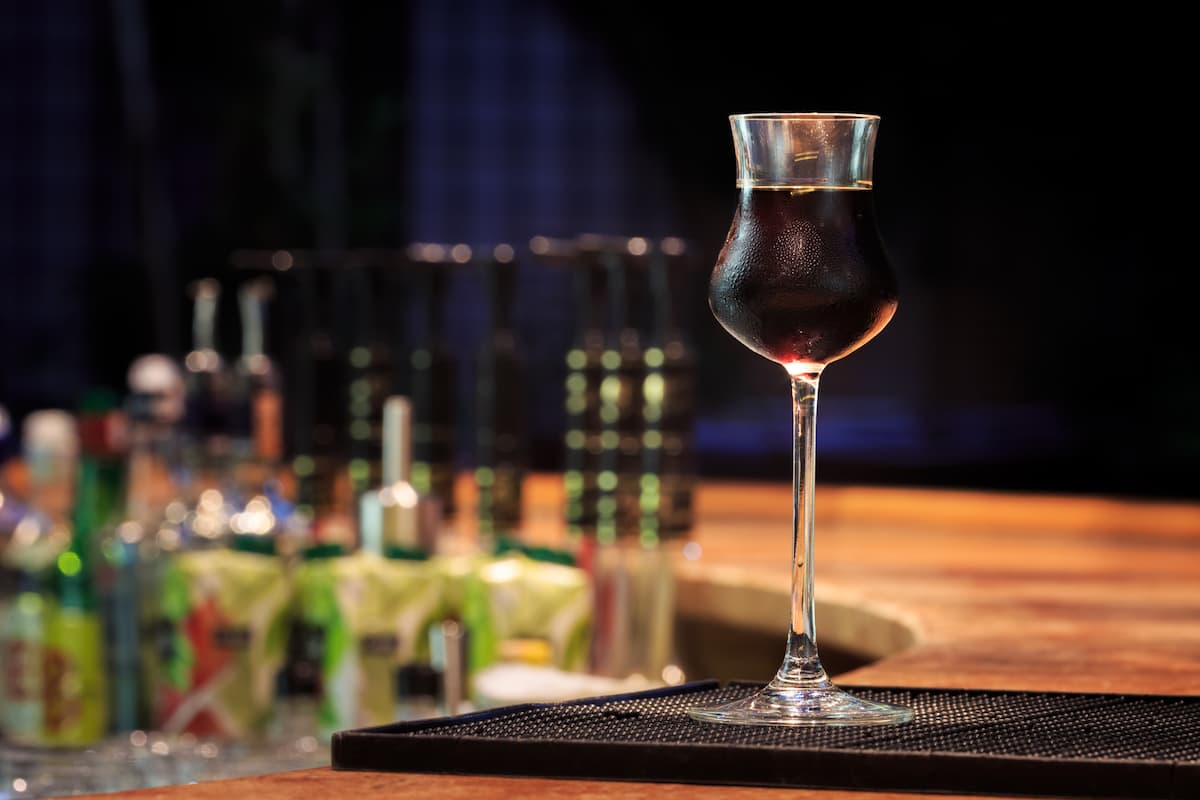The broad definition of amaro (plural: “amari”) is the category of bitter liqueurs originally from Italy and made in many countries today. The category is extensive and contains both super bitter and bittersweet flavor expressions; some fruity and others piney; some with high proofs and others with less than 20 percent ABV. They also have different functions; some are designed for sipping mixed or as an aperitif; others are better sipped neat as digestifs after a meal.
Categorizing Amaro by Use
There are a few different ways of further categorizing and describing amari. The first is by use—whether an amaro is an aperitif or digestif. A digestif is a drink consumed after a meal to help aid in digestion. Digestif beverages are typically on the bitter side of bittersweet, and on the higher end of the ABV spectrum. Amaro brands including Averna, Braulio, Lucano, Meletti, Nardini, Nonino, and Fernet-Branca are often taken this way.
An aperitif can be consumed on its own or mixed with sparkling water, sparkling wine, and/or poured over ice. Aperitifs are low in alcohol and typically on the sweet end of bittersweet. In this category we would place Aperol (usually served in an Aperol Spritz with sparkling wine and soda water) and Campari, as served in an Americano with sweet vermouth and soda water or in the Negroni with gin and sweet vermouth.

Now, the Negroni is a far richer and a higher ABV cocktail than an Aperol Spritz, and this shows the flaws in this aperitif/digestif categorization system. Aperitifs and digestifs are defined by how and when you consume them. Many people consume vermouth, sparkling wine, or even Gin & Tonics as aperitifs before a meal, and many people consume neat pours of scotch whisky or cognac as digestifs. If you make a Scotch and Soda, the same spirit scotch is now used as an aperitif.
Categorizing Amaro by Flavor
Another way to classify amari is by their predominant bitter flavor. Brands of amaro flavored with artichoke leaves are known as carciofo, and include Cynar, and the carciofo liqueur made by Don Ciccio & Figli (based in Washington, DC). Similarly, tartufo are amari with black truffles in the recipe. Rabarbaro is the category of amaro flavored with rhubarb root, and includes Zucca, Sfumato (a wine-based rabarbaro), and the Boston-made Bully Boy Amaro Rabarbaro. Gentian liqueurs are mostly made in France, so we may or may not want to classify them as amaro, but in any case, leading brands are Suze, Salers, and Aveze.
The liqueurs mentioned above are identified by a single flavor element, though they all contain multiple ingredients. Campari and similar aperitif bitters discussed above might be called citrus or fruit-forward amari, focusing on bitter orange or grapefruit but with a range of bitter ingredients included. (Some people classify Campari and similar products as “red bitters,” speaking to their color, though there is a common flavor element among them as well.)
Further categorization with a range of flavors gives us “alpine amaro” brands like Braulio and Amaro Alpino by the Brooklyn-based Faccia Brutto. These tend to have pine and/or eucalyptus notes that we associate with high-elevation vegetation. Other herbal Italian liqueurs are centerbe or centerba (meaning “100 herbs”) that are reminiscent of Chartreuse, but these are not often categorized as amari so much as just herbal liqueurs.

Fernet is another category of amaro based on flavor profile as well as other factors. Though the category is dominated by the Italian Fernet-Branca, other brands including Fernet Francisco and Fernet Vallet are made in other countries. These spirits tend to be close to 40 percent alcohol, quite bitter, and with very little sugar compared with other amari. They also typically include saffron and aloe ferox as bittering agents among others.
Flaws in categorizing amaro by flavor are that most of the recipes are secret, and that not every amaro is dominated by a single flavor or flavor profile. It is challenging to say where to file amari like Averna, Lucano, Meletti, Nardini, and Nonino, even though these brands are what we might call textbook examples of the entire amaro category. They are bittersweet and in the middle of the ABV range.
To sum up, there is no official, standardized way to sub-categorize amari, but there are some descriptors that we can use to get us further along in the conversation.




I found the discussion on categorizing amaro by flavor or use really insightful. It’s fascinating how these bitter liqueurs can be classified based on their taste profiles as well as whether they are meant for aperitif or digestif purposes. The idea of segmenting them in this way could help both enthusiasts and newcomers navigate the diverse world of amaro more easily. I wonder if certain categories are more popular in different regions or if there are emerging trends in how people are enjoying amaro. Exploring these aspects could deepen our geometry dash lite appreciation for this versatile spirit.